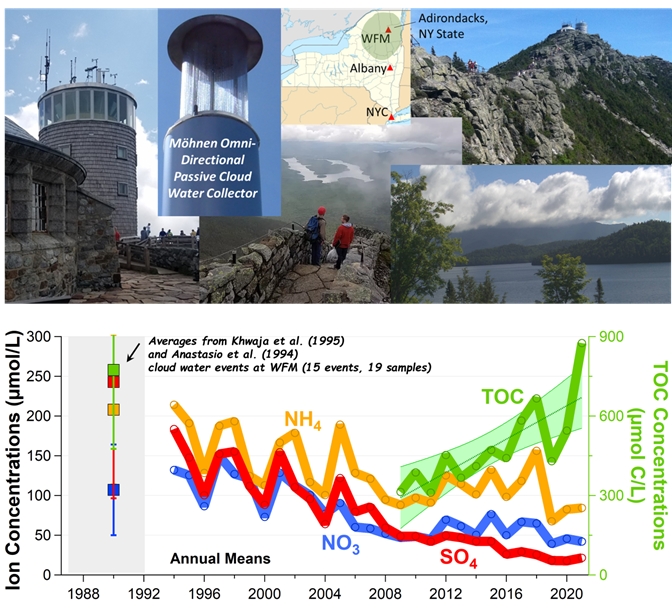Whiteface Mountain (WFM) Cloud Water Chemistry
History
Whiteface Mountain (WFM) in northern New York State is one of the highest peaks in the Adirondacks and is an important sampling site for cloud chemistry research. Routine chemical analysis of cloud water collected from the top of WFM began in 1986 during the Mountain Cloud Chemistry Project, followed by the Mountain Acid Deposition Program from 1994 to 1999. Measurements were then undertaken by the Adirondack Lake Survey Corporation from 2001 to 2017. Much of this historical data was reported by Aleksic et al., 2009 (for the period from 1994 to 2006) and Schwab et al., 2016 (up to 2013).
This cloud water monitoring research began with a primary focus on sulfate and nitrate pollution and the "acid rain" caused by these chemicals. Since the early 2000's, cloud water sulfate concentrations have dropped by more than 80% and average pH values have increased from 4 to 5 (a factor of 10 change in free hydrogen ion concentrations) becoming much less acidic as a result of the Clean Air Act and associated government regulations. This recent history is a clear success story for the longterm health of the Adirondack ecosystems.
The cleanest water we expect to ever achieve (pure water in equilibrium with atmospheric CO2) would have a pH of about 5.6 due to dissolved bicarbonate ions, and the average annual pH has steadily increased towards this value (with some samples well below and some samples well above this pH value). Meanwhile, water soluble organic carbon (WSOC) has been steadily increasing over the past decade, and trying to identify reasons behind this growing WSOC trend is an active area of current research.





